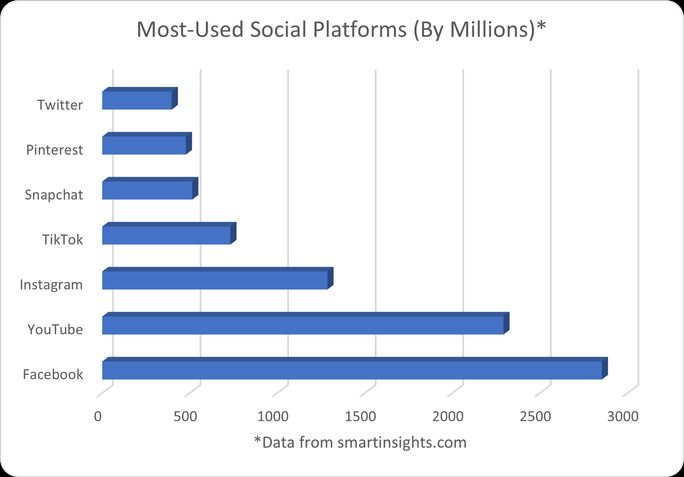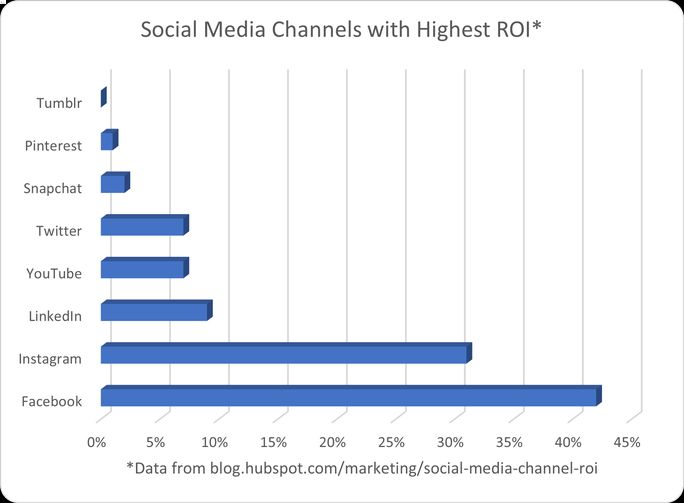Every business wants a great ROI on their social media marketing.
As a result, all companies make continuous efforts to increase their customer flow through social media.
Social media platforms like Facebook and Instagram allow you to advertise to a broader audience for additional fees. You can go for paid ads to target specific customer segments all around the world.
But how much of what you spend on social media marketing will you get back as revenue?
Now that’s a question that needs to be answered.
The concept of ROI (return on investment) comes into play here — a widely-used metric in almost all industries.
When you start your own business, you and your team need to be aware of some crucial KPIs to measure your growth and success.
But the truth is that 34% of global marketers do not know how to calculate their social media ROI.
So without any further ado, let’s see what a social media ROI calculator is and how you can measure it.

Put simply, social media marketing ROI shows how much you get back from the money, time and efforts you spend on social media marketing. In other words, it shows the difference between the costs and gains of a particular project.
Social media marketing ROI can be expressed either numerically or as a percentage depending on your goals. In most cases, a social media ROI calculator will give you a percentage by dividing earned income by the total costs.
There are two ways to get the necessary metrics for measuring social media ROI. The first way is social media itself. For example, business or premium accounts on Instagram, LinkedIn, or Facebook offer built-in tools that measure follower demographics, number of page visits, etc.
The second source of gaining insights is third-party social media analytics tools. These tools introduce you to additional metrics, such as session duration, pages per session, bounce rates, etc., which can all be helpful in getting the ROI from your social media channels.
So why is it critical to measure and report your social media ROI?
- See if your social media strategies are effective and profitable
- Identify the most successful elements in your social media marketing strategies
- Improve your social media campaigns for better reach and engagement
- Revise and allocate your social media budget accordingly
Succeeding in the world of lead generation requires constant measurement of performance. If you’re relying on social media to influence prospective customers, you need to track some crucial social media metrics, which will be needed to calculate your ROI.
These are five of the essential social media metrics you need to keep a weather eye on.
- Reach: The number of people who have come across your content on social media. High reach usually has a direct correlation with increased ROI.
- Traffic: The number of clicks from all channels that take prospects to where conversion usually happens.
- Leads: Any effort by prospecting customers that enables you to follow up with them. That includes anything from email addresses to credentials. This is an extra step by the customer, who provides more than traffic but is not a converted customer yet.
- Customers: The number of leads that end up making a purchase.
- Conversion rate: The percentage of prospects who eventually become customers.
After you get your data and define your metrics, calculating the social media ROI is easy. However, there are few ways to make your calculations. Based on what exactly you want to measure, the components of the formulas will be different. The general formula is
ROI = Return (profit from social media marketing) / Investment (total cost spent on social media marketing) x 100%
If you can identify the exact amount of revenue from social media marketing only, then you only need to plug in the numbers and get your ROI in percentage terms.
But if the direct impact on revenue is hard to attribute, you can calculate the ROI based on non-monetary records. Here are a few steps you need to take to get accurate estimates.
Step 1: Set Your Goals
To get to the type of ROI you need, you first have to know what you want to achieve. Maybe your social media campaign is primarily aimed at increasing your number of followers, eventually leading to monetary value. You may want to know how many of your customers:
- Click on links
- Make a purchase
- Subscribe, like, share, or follow
- Download files
- Fill out some forms
- Spend time on your page
Step 2: Track Conversions
Once you identify which conversion goals you want to pay attention to, you need to start tracking them. Most social media platforms also have built-in trackers that analyze and present important insights.
Step 3: Assign Monetary Value to Each Conversion
It’s time to turn all units of measurement into dollar terms. You have two ways to go from here — either using historical data or guesstimating. Here are some common methods for giving a monetary value to your conversions:
- Lifetime value (LTV): The amount of money you earn on average per customer. Let’s say, by using historical data, you know that one in five customers (20%) who follow your social media page end up making a purchase.
And if you know that a customer spends $100 on average, then by multiplying $100 by 20%, you will get the approximate value of each extra follower, which will be $20 in this case.
If you don’t have prior historical data, you can use guesstimating, which involves common sense and experience until you collect sufficient information.
- PPC (pay-per-click) costs: The amount of money you would spend on ads to achieve the same social media actions. In other words, you are comparing your organic traffic to how much you would need to pay to achieve the same traffic.
For example, if the cost of acquiring one more follower to your Instagram page is $0.25, then the organic gain of 100 followers would potentially be worth $25.
Your accounting department can help you out with this. Accrue all the costs you’ve spent on social media marketing campaigns. Those may include:
- Premium account fees
- Money spent on social media ads
- Labor costs of the social media marketing team
- Content creation
- Consultancy fees (if applicable), etc.
Step 5: Break Down Earnings and Costs by Each Channel (Optional)
If you want to do further analysis and see which social media networks show the best results, you can calculate the ROI for each one separately. For that, you should disseminate the costs and revenues coming from each source and follow the same procedure to get separate ROIs.
You can skip this step if you’re interested in the general social media marketing ROI. In any case, you can still calculate for each social media independently and then take the sum of the results to get the full one.
HubSpot recently surveyed 1,500 marketers, asking them which social media channel resulted in the highest ROI. Almost half of the surveyed companies stated Facebook generates the highest social media ROI. Instagram is a close second that is also gaining a lot of momentum.

Step 6: Plug in the Numbers and Analyze
After having everything ready for our calculations, we turn back to our main formula. Yes, even with different components, the main formula is the only way to estimate your return on investment.
Note that with this formula, you will only get a positive number. For example, if your ROI is 100%, it means that your costs and earnings are equal. A figure of more than 100% means your ROI is positive. Anything below 100% means that it is negative.
A similar formula with a different interpretation is
ROI = (Return (profit from social media marketing) – Investment (total cost spent on social media marketing)) / Investment (total cost spent on social media marketing) x 100
In this case, you will get either a positive or a negative number. Therefore, your breakeven point will be 0%, equivalent to 100% on the other scale.
Conclusion
Social media is a powerful tool, but reaping what it has sown may not be as clear as it seems. You may not know if the seeds that you planted give you the result that you want.
So to see if your efforts are paying off, you need to continuously calculate your social media ROI. For a formula that has its roots in third-grade math, it certainly embraces a great amount of information for your future growth and development.
For creating ripples in your social media marketing journey use a tool like SocialPilot that not only automates the scheduling of your posts but analyzes its performance as well.
The best part? It comes with a 14-day FREE trial. What’s stopping you from trying it?



